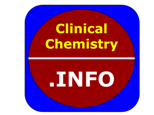Clin Chem Lab Med. 2025 Mar 12. doi: 10.1515/cclm-2024-1237. Online ahead of print.
ABSTRACT
OBJECTIVES: To compare clinical laboratory workflows for the assessment of androgens in men, focusing on total testosterone (T), sex hormone-binding globulin (SHBG) and free T, in clinical laboratories throughout Europe.
METHODS: An internet-based survey that included questions related to pre-analytical, analytical and post-analytical phases of androgen measurements was distributed between December 2022 and December 2023 by clinical laboratory/chemistry and endocrine societies. A total of 124 unique records from clinical laboratories in 27 European countries were analyzed.
RESULTS: Pre-analytical requirements for total T are subject to improvement as less than half of clinical laboratories recommended adequate morning sampling time and/or sampling in a fasting state. Total T was predominantly quantified using enzyme-linked immunoassay (IA) on automated platforms, with only one in four centers using mass spectrometry (MS), while SHBG was exclusively measured by IA. Additionally, free T was used by a majority of clinical laboratories, mainly reported as approximation by calculation of free T (cFT) using the Vermeulen formula. Generally, age-stratification was the preferred means of reporting reference ranges for total T, SHBG and cFT. However, considerate variability was observed in reported lower and upper limits, leading to the necessity of interpreting test results against assay-specific reference ranges, thereby hindering comparability of results between clinical laboratories.
CONCLUSIONS: Our survey highlights significant inter-laboratory variability for the assessment of androgen status in men, implying non-commutability of clinical test results between different centers. In addition, we observed poor adherence to pre-analytical recommendations. These findings advocate for continued harmonization efforts of measurement procedures for SHBG and total/free T.
PMID:40068942 | DOI:10.1515/cclm-2024-1237
